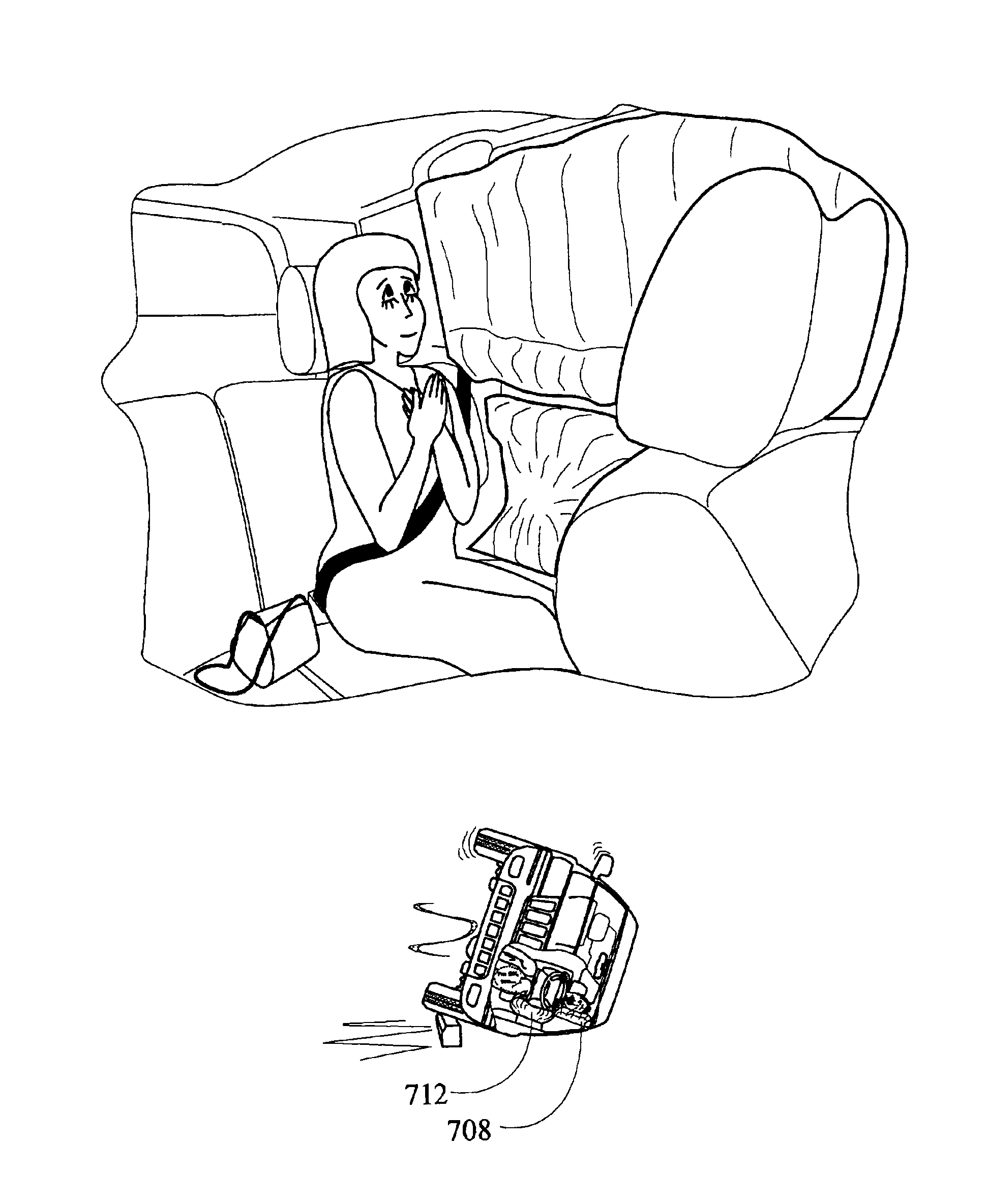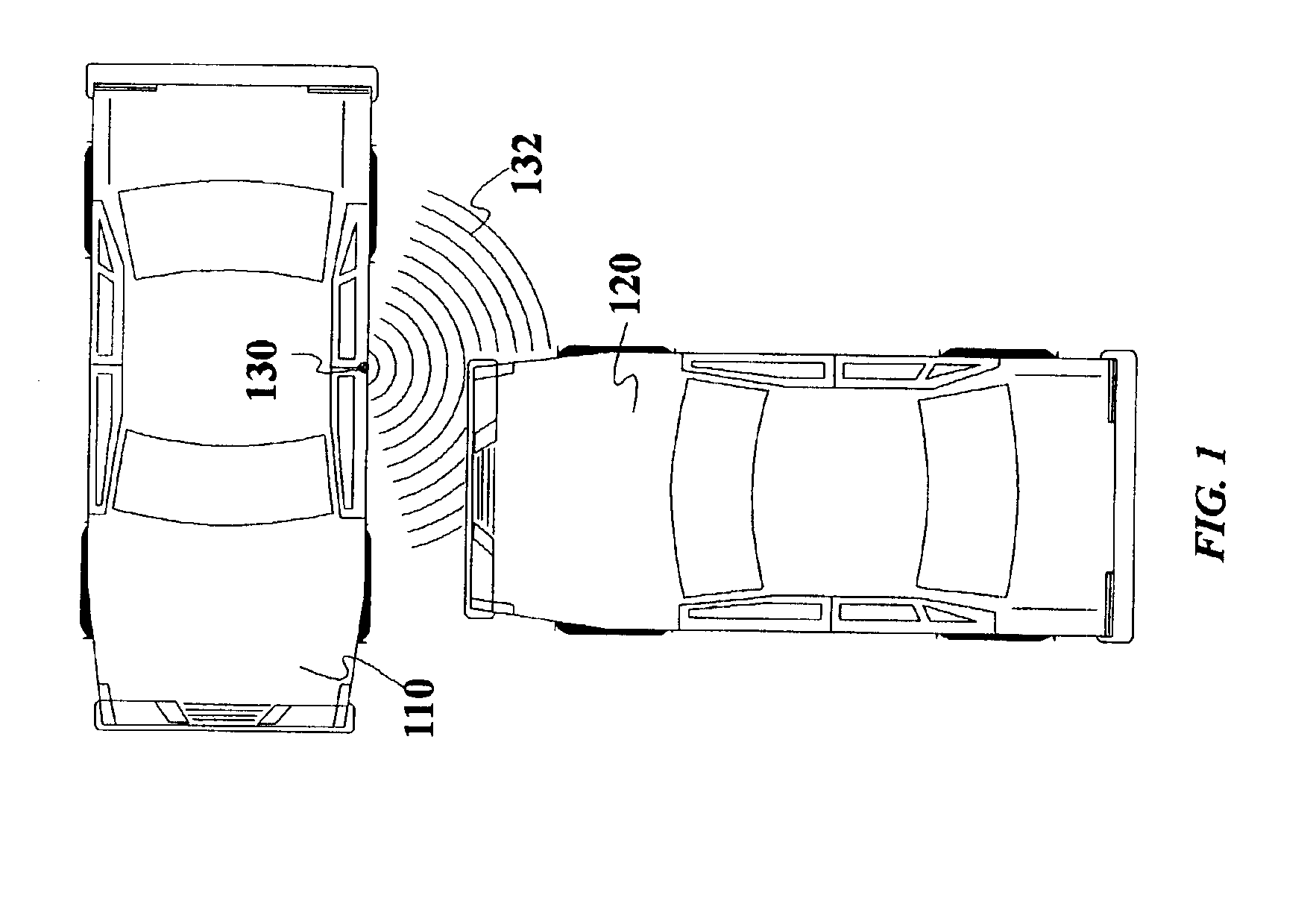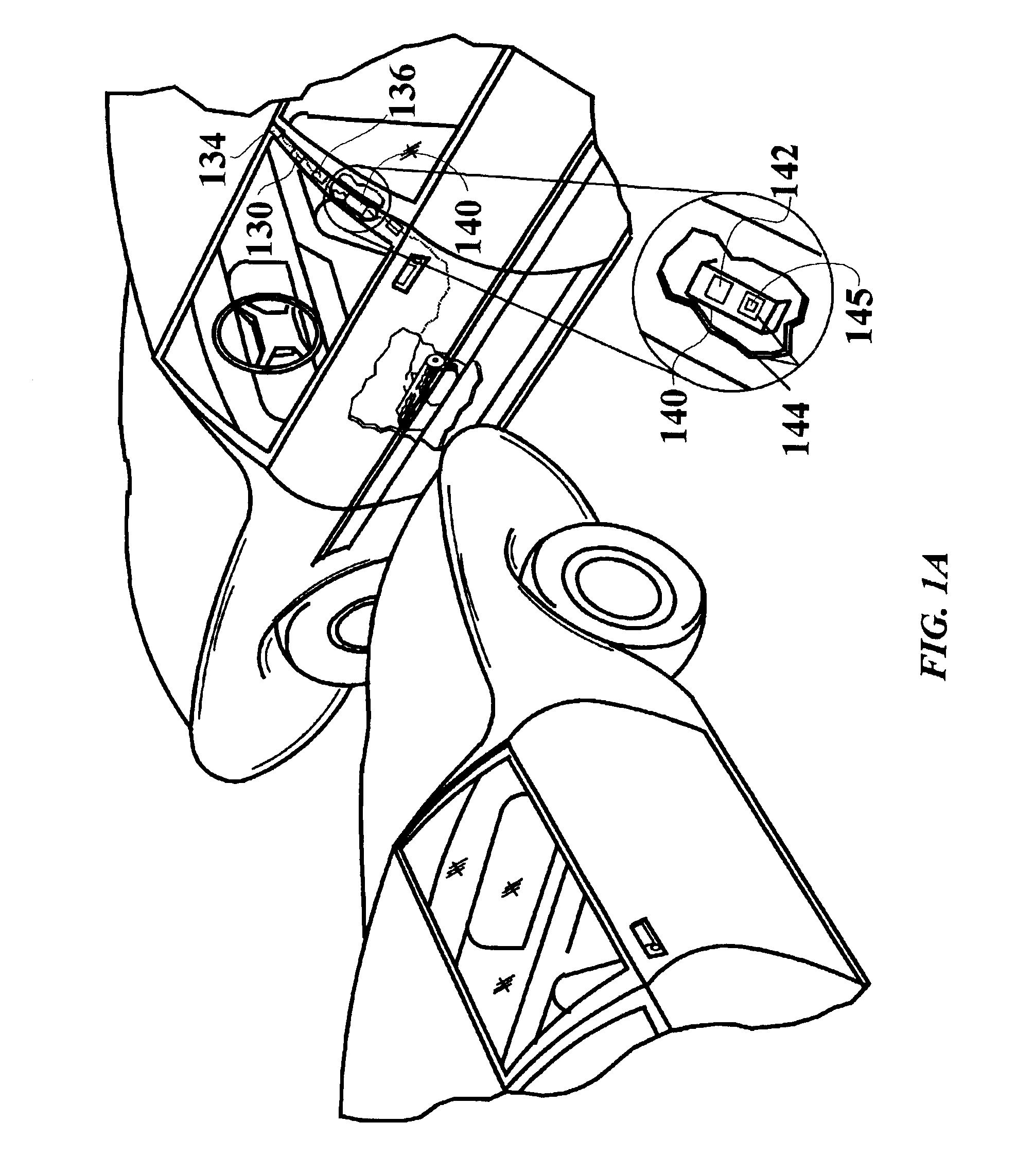Method and apparatus for deploying airbags
a technology of airbags and airbags, applied in child seats, instruments, tractor parts, etc., can solve the problems of 8,000 deaths, side impact problems that are considerably more difficult to solve in this way, and related deaths
- Summary
- Abstract
- Description
- Claims
- Application Information
AI Technical Summary
Benefits of technology
Problems solved by technology
Method used
Image
Examples
Embodiment Construction
[0108]Referring to the accompanying drawings wherein like reference numerals refer to the same or similar elements, FIG. 1 is an overhead view of a vehicle 110 about to be impacted in the side by an approaching vehicle 120 where vehicle 110 is equipped with an anticipatory sensor system in accordance with the invention including a wave transmitter 130 which transmits waves 132 toward the approaching vehicle 120. A perspective view of vehicle 110 is shown in FIG. 1A and illustrates the transmitter 130 connected to an electronic module 140 (this connection being symbolized by the dotted lines between the transmitter 130 and the module 140 which may represent a wire). Module 140 is mounted in the B-pillar and contains circuitry means 142 to drive the transmitter 130 to transmit waves and circuitry means 144 coupled to wave receivers 134,136, which receive the returned waves and convert the same into signals, to process the signals from receivers 134 and 136 representative of the return...
PUM
 Login to View More
Login to View More Abstract
Description
Claims
Application Information
 Login to View More
Login to View More - R&D
- Intellectual Property
- Life Sciences
- Materials
- Tech Scout
- Unparalleled Data Quality
- Higher Quality Content
- 60% Fewer Hallucinations
Browse by: Latest US Patents, China's latest patents, Technical Efficacy Thesaurus, Application Domain, Technology Topic, Popular Technical Reports.
© 2025 PatSnap. All rights reserved.Legal|Privacy policy|Modern Slavery Act Transparency Statement|Sitemap|About US| Contact US: help@patsnap.com



